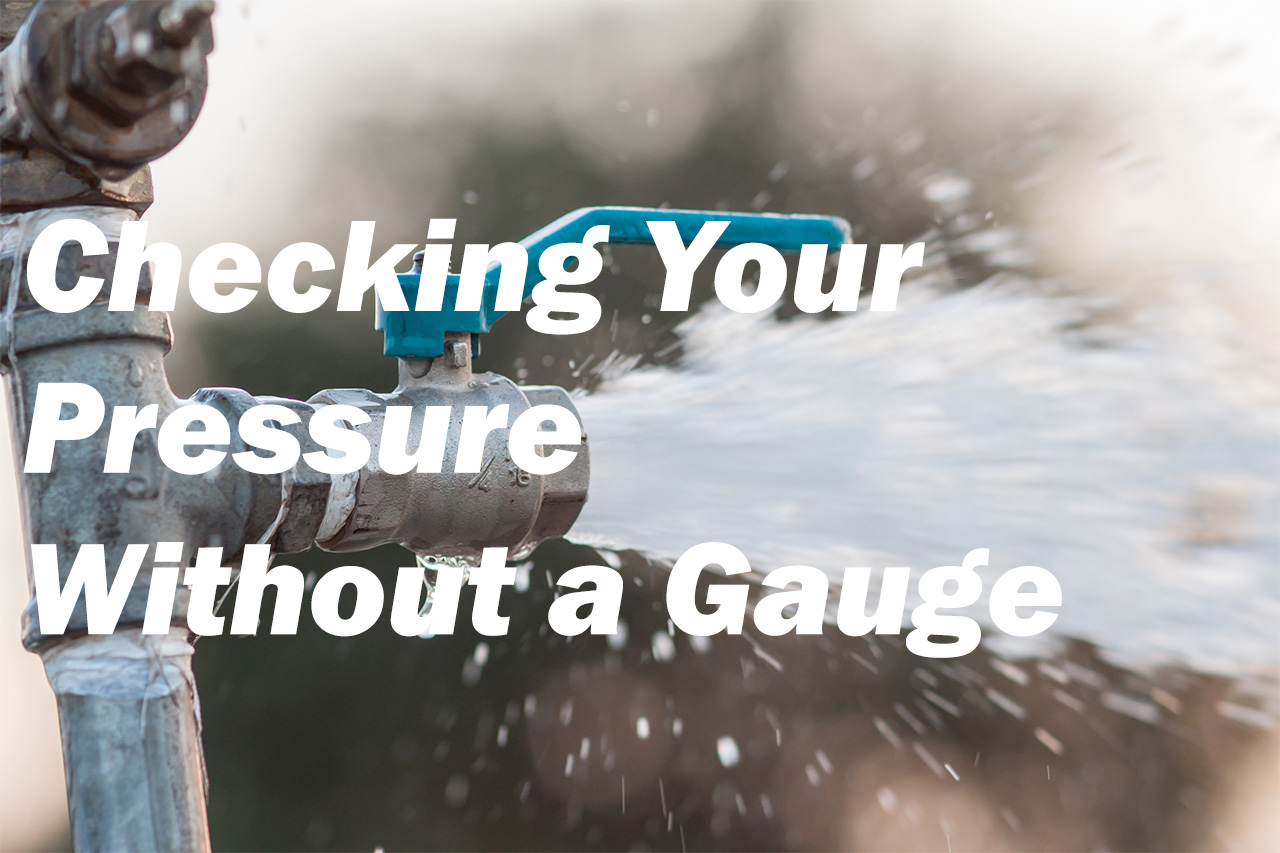How to Check Water Pressure Without a Gauge
Jan 20th 2023
No water pressure gauge? No pressure! Learn how to check water pressure without a gauge in this brief and informative blog from your friends at DripWorks.
We all know that's it's smart to check your blood pressure for a healthy heart and body. But did you know it's also important to keep tabs on your water pressure at home or on the farm?
Knowing the water pressure of the wet stuff coming out of your pipes is important for drip irrigation systems. To provide a slow and steady supply of water to your plants, drip systems require low water pressure. Water pressure that is too high can damage your drip watering system.
It's also important to know about your water pressure inside your home. You want pressure that's high enough for soothing showers, cleaning clothes, washing dishes and other household tasks. But pressure that is too high can damage your plumbing, pipes and appliances.
It's easy to check water pressure with a water pressure gauge. But maybe you don't have one and don't want to buy one. Or you do have one, but it is broken, and you don't want to add any more clutter to your home or toolshed by buying a new one. It could be you just like to do things differently.
Whatever the reason, DripWorks is happy to share a few pointers on how to check water pressure without a gauge.
Saving Bucks with a Bucket
The bucket method is probably the easiest and will give you an approximate idea of whether your pressure is too low, too high or just right. First, get a one-gallon bucket. Find the spigot closest to your source of water. Make sure all the taps and other water uses are turned off in your house.
Now turn on the spigot and see how long it takes to fill the bucket. Dividing the number 60 by the time to fill the bucket will give you the gallons per minute number. If the figure is between 5 and 6 GPM, that is ideal. Below 5 and your water pressure is low. If it is above 6, the water pressure is high and could damage pipes, appliances and your drip irrigation system.
Filling the Cup
Another method is to use a four-quart cup. Again, turning off all the water sources in your home. Using the faucet closes to the water source, fill the cup for 10 seconds. Then shut off the spigot. Multiplying the amount of water collected by 10 will give you the gallons per minute figure you need to assess approximate water pressure.
Either way, if the water pressure coming from your faucet is too high for your drip irrigation system, pressure regulators provide an easy and affordable fix.
Reaching New Heights
One final method is a little trickier and will likely require some equipment and climbing. So, if you don't like heights, this one isn't for you.
In this method, attach a garden hose to a tap. Open the faucet and lift the hose up until the water stops coming out. You may need a ladder to reach the necessary height. Or you might have to get up on the roof or use a crane, all of which will likely add up to a lot more time, effort and money than simply using a working pressure gauge. But hey, you asked for it.
If you have scaled the dizzying heights and managed to get the water to stop, however, measure the height where that happened. Now divide that number by 2.31. This will give you the approximate water pressure. Whew!

